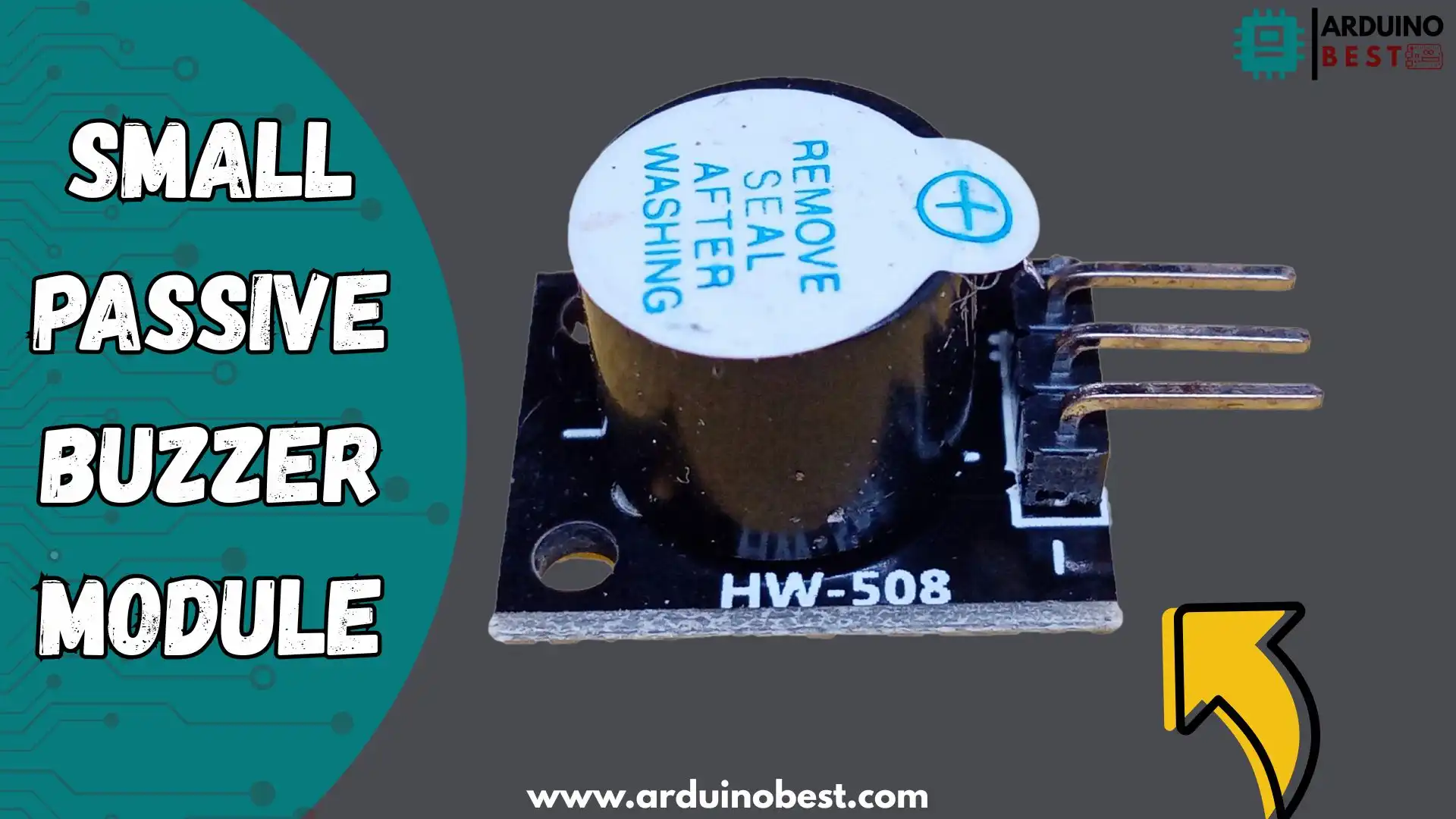Introduction
The small passive buzzer module is a crucial component in electronics, providing sound feedback in various applications. Unlike active buzzers, passive buzzers require an external oscillation signal to produce sound, making them more versatile in generating different tones and frequencies.
Table of Contents
Whether you’re working on Arduino projects, security alarms, or simple sound indicators, understanding the working principles of passive buzzers is essential. In this guide, we’ll explore the features, working principles, applications, integration methods, and troubleshooting techniques of small passive buzzer modules.
What is a Small Passive Buzzer Module?
A small passive buzzer is an electroacoustic device that converts electrical signals into sound. It requires an external signal, such as a pulse-width modulation (PWM) signal, to generate different tones.
Key Features:
- Requires an external driving signal
- Capable of producing a variety of tones
- Operates at low voltage (typically 3V to 12V)
- Compact and lightweight
- Low power consumption
For a more detailed breakdown of buzzer pinouts and specifications, refer to this guide on buzzer components.
How Does a Passive Buzzer Work?
Unlike active buzzers, which have a built-in oscillator, passive buzzers need an external driver circuit. When an alternating current (AC) or PWM signal is applied, the buzzer’s piezoelectric element vibrates, producing sound.
Working Principle:
- The microcontroller generates a PWM signal.
- The signal drives the piezoelectric diaphragm inside the buzzer.
- The diaphragm oscillates, producing sound waves.
- The frequency of the PWM signal determines the pitch of the sound.
If you’re new to PWM signals and how they work in sound generation, you can check out this detailed tutorial on PWM and sound generation.
Applications of Small Passive Buzzers
Passive buzzers are widely used in various electronic applications, including:
- Security Alarms – Used in burglar alarms, smoke detectors, and emergency alerts.
- Consumer Electronics – Found in washing machines, microwave ovens, and timers.
- Robotics and Automation – Provides sound feedback in robotic movement or control systems.
- DIY Electronics Projects – Ideal for Arduino and Raspberry Pi sound-based applications.
- Musical Tones Generation – Can generate musical notes by controlling frequency.
How to Connect a Passive Buzzer to an Arduino
Components Required:
- Small passive buzzer module
- Arduino board (e.g., Arduino Uno)
- Jumper wires
Circuit Connection:
| Arduino Pin | Buzzer Pin |
|---|---|
| GND | GND |
| D9 (PWM) | Signal (S) |
| 5V | VCC |
Sample Arduino Code:
int buzzer = 9; // Define buzzer pin
void setup() {
pinMode(buzzer, OUTPUT);
}
void loop() {
tone(buzzer, 1000); // Play 1kHz tone
delay(1000);
noTone(buzzer);
delay(1000);
}
Advantages and Limitations
Advantages:
- More control over frequency and tone
- Lower power consumption
- Lightweight and compact
- Cost-effective
Limitations:
- Requires external oscillation circuit
- Sound intensity is lower compared to active buzzers
Troubleshooting Common Issues
1. No Sound Output:
- Ensure the signal pin is correctly connected.
- Check if the PWM signal is functioning.
- Try increasing the frequency.
2. Distorted Sound:
- Use a stable power supply.
- Verify the PWM duty cycle.
3. Buzzer Not Turning Off:
- Ensure the
noTone()function is used in the code. - Disconnect the power supply to reset the circuit.
FAQs
1. What is the difference between an active and a passive buzzer?
- An active buzzer has a built-in oscillator and produces sound when powered, while a passive buzzer requires an external frequency signal.
2. Can a passive buzzer generate different tones?
- Yes, by adjusting the PWM signal frequency, you can produce various tones.
3. How do I control the volume of a passive buzzer?
- The volume is mainly controlled by the power supply voltage and signal amplitude.
4. Are passive buzzers energy efficient?
- Yes, they consume less power compared to active buzzers.
Conclusion
Small passive buzzer modules play a crucial role in various electronic applications, offering a simple and efficient way to generate sound. Unlike active buzzers, they require an external signal to produce different tones, making them highly versatile for creating alarms, musical notes, and notification sounds. Their low power consumption and compact size make them ideal for embedded systems, home automation, and robotics.
When paired with Arduino, Raspberry Pi, or other microcontrollers, passive buzzers allow for precise sound control in DIY projects. By adjusting the frequency of the input signal, users can generate custom tones, making them a popular choice for hobbyists and professionals alike. Whether you’re building a security system, a smart doorbell, or an interactive gadget, these buzzers provide an affordable and effective sound solution.
As technology continues to advance, the applications of passive buzzer modules will only expand. Understanding their working principles and best practices for integration will help you make the most out of these components. Whether you’re a beginner experimenting with circuits or an experienced developer designing innovative projects, small passive buzzers offer endless possibilities for enhancing your electronic designs.
Arduino Projects:
1- Complete Guide for DHT11/DHT22 Humidity and Temperature Sensor With Arduino
2- DHT11 – Temperature and Humidity Sensor
3- DHT22 – Temperature and Humidity Sensor (more accurate than DHT11)
4- BMP180 – Barometric Pressure and Altitude Sensor
5- BMP280 – Barometric Pressure & Temperature Sensor
6- BME280 – Temperature, Humidity, and Pressure Sensor
7- Arduino Flex Sensor Controlled Robot Hand
8- Arduino ECG Heart Rate Monitor AD8232 Demo
9- Arduino NRF24L01 Wireless Joystick Robot Car
10- Arduino Force Sensor Anti-Theft Alarm System
11- Arduino NRF24L01 Transceiver Controlled Relay Light
12- Arduino Rotary Encoder Controlled LEDs: A Complete Guide

